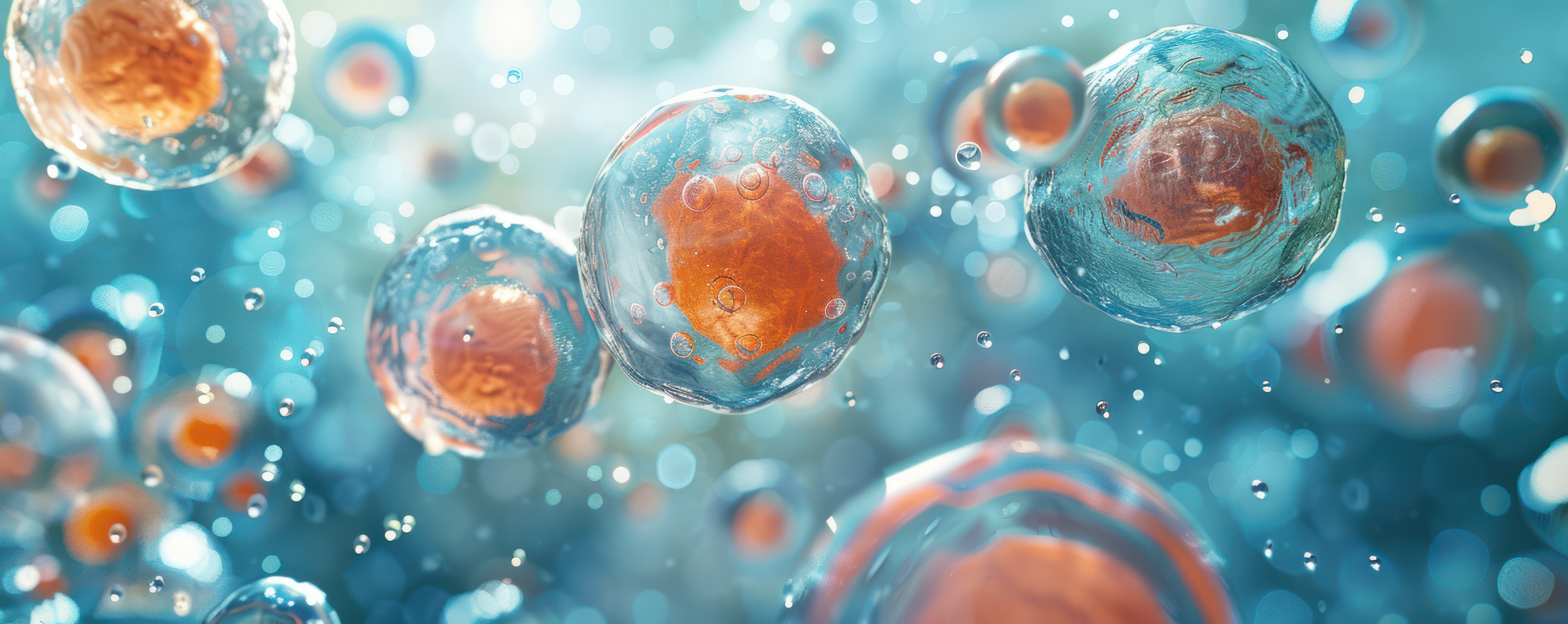Gene therapies aim to treat or prevent diseases by modifying the genetic material within a patient's cells. One of the crucial elements in gene therapy is the use of viral vectors to deliver the genetic material into target cells. Among these, lentivirus, retrovirus, adenovirus, and adeno-associated virus (AAV) are the most used vectors, each with unique properties that make them suitable for different applications. Lentiviruses have gained significant attention due to their ability to integrate into the host cell genome and infect both dividing and non-dividing cells. These enveloped viruses, with a single-stranded RNA genome, utilize reverse transcriptase to convert their RNA into DNA, which is then integrated into the host genome. This integration ensures that the therapeutic gene is maintained through cell divisions, providing stable, long-term expression. Lentiviral vectors can transduce a wide range of cell types, including stem cells, Human Embryonic Kidney (HEK) cells, neurons, T cells, etc., making them particularly valuable for applications such as in the treatment of genetic disorders and certain types of cancer. The capability for long-term expression of the transgene plays a crucial role in the development of advanced gene therapies, offering hope for treatment of previously incurable diseases.
Challenges Arising at LV Harvest Clarification
When working with lentiviral vectors in gene therapy, several considerations and challenges must be addressed to ensure high yield/recovery while keeping manufacturing costs low. Traditional bioprocessing harvest tools, such as depth filtration, have focused and optimized their processes for traditional protein biotherapeutics. Protein-based therapeutics and other dominant viral vectors primarily result in protein-surface interactions and as such materials and bioprocesses have been selected to minimize the undesirable binding. In contrast, lentiviral particles are enveloped with lipids and glycoproteins, presenting unique surface chemistry differing from typically observed protein chemistry. Thus, the lipid envelope and glycoproteins on lentiviral particles can increase their tendency to adhere to filter surfaces, leading to significant losses during traditional clarification processes. Indeed, Mayani et al. 2024 reported that “…the depth filtration process [becomes] a bottleneck for the purification performance in intensified [lentiviral] processes” and lead to upwards of 20% losses, even after substantial optimization.1 Such surface interactions exacerbate the losses already associated with depth filtration use, where, as Perry and Rayat 2021 noted: “In all cases, some degree of LV loss is to be expected due to adsorption onto the filter or onto a component excluded by the filter, in addition to losses in the filtration system’s hold-up volume.”2
Additional challenges with depth filtration for LV harvest can arise from shear stress damaging cells in the filters. As Perry and Rayat 2021 note that high transmembrane pressures may rupture cells and cell fragments, resulting in undesirable impurities in the filtrate.2 This release of unwanted intracellular contents and cell debris will contaminate the valuable supernatant phase, which can complicate downstream processing steps and reduce the overall quality of the lentiviral product.
Ultimately, lower recovery of lentiviral particles during clarification will negatively impact final yield, requiring larger starting volumes to achieve desired therapeutic dose count.
Furthermore, depth filtration can be a time-consuming, labor-intensive, and costly process. Setting up and taking down depth filtration skids often requires an extensive amount of technician labor for each task, which reduces the time available for other process-related activities. This extensive labor demand can add significantly to the overall cost, in addition to the costs associated with purchasing filters and related materials.
Resolving LV Harvest Challenges with Centrifugal Clarification
Single-use centrifugation has emerged as an efficient, cost-effective, low-shear alternative to depth filtration for clarification in lentiviral processing. This method can effectively separate cells and other undesirable impurities without incidentally removing or impacting the lentivirus particles in the centrate. The centrifuged, clarified material can be more readily filtered, reducing required filtration area, reducing LV particle losses due to binding, and ultimately improving overall yield. During centrifugation of lentiviral cultures, the cells and debris are pelleted within the centrifuge while the lentiviral particles are passed through to the supernatant for collection. A low shear tubular bowl centrifuge, such as the UFMini, can separate the LV from the undesirable contaminants while mitigating additional release of undesirable intracellular contaminants, producing a clear, ready-to-process supernatant phase.
An additional benefit of single-use centrifuges is the capacity of handling large culture volumes efficiently in a single device while reducing any filtration area required. In turn, reduced filter area leads to lowered consumable and buffer costs, decreased processing time, and potentially simplified purification workflows. With these savings, the total net present cost of operations can substantially diminish, benefitting from improved yields, reduced labor, and minimized material costs, resulting in more doses per batch and reduced costs per dose.
Conclusion
In summary, while traditional depth filtration has been a legacy choice for clarification in historic biotherapeutic processes, single-use centrifugation offers promising solution to the challenges posed by LV harvest clarification. By enhancing recovery, reducing filtration needs, and improving operational efficiency, single-use centrifugation represents a valuable advancement in optimizing lentiviral production processes. As gene therapies continue to evolve, choice of the proper clarification technology will be crucial for achieving high-quality and high-yield outcomes.
About CARR
CARR is a leader in providing separation solutions to the bioprocessing industry. The UniFuge® family (UFMini, UniFuge Pilot, and U2K) of scalable single-use tubular bowl centrifuges are currently implemented in a wide range of bioprocesses from advanced therapies to traditional vaccines, including numerous FDA licensed products. Drug manufacturers rely on its gentle cell separation to enable a range of unit operations in a closed and scalable platform. CARR’s steam- and clean-able PowerFuge® and ViaFuge® product families respectively provide high-g separation for the harvest of microbial cultures and cell lysates in the production of vaccines and low-shear harvest of viable mammalian cells in the production of cultivated meats. Since its founding in Medfield, Massachusetts in 1993, CARR has been a partner to bioprocessing companies, working consultatively with process engineers to optimize bioprocesses and deliver safe and effective lifesaving and life-enhancing therapies to patients.
References
1. Mayani M, Nellimarla S, Mangalathillam R, Rao H, Patarroyo-White S, Ma J, Figueroa B. 2023. “Depth Filtration for clarification of intensified lentiviral vector suspension cell culture.” Biotechnol Prog. 40(2). https://doi.org/10.1002/btpr.3409
2. Perry C, Rayat A. 2021. “Lentiviral Vector Bioprocessing.” Viruses. 12(2). https://doi.org/10.3390/v13020268




